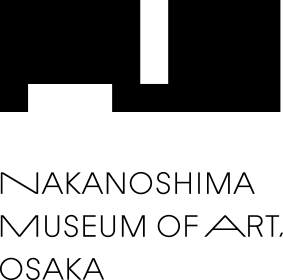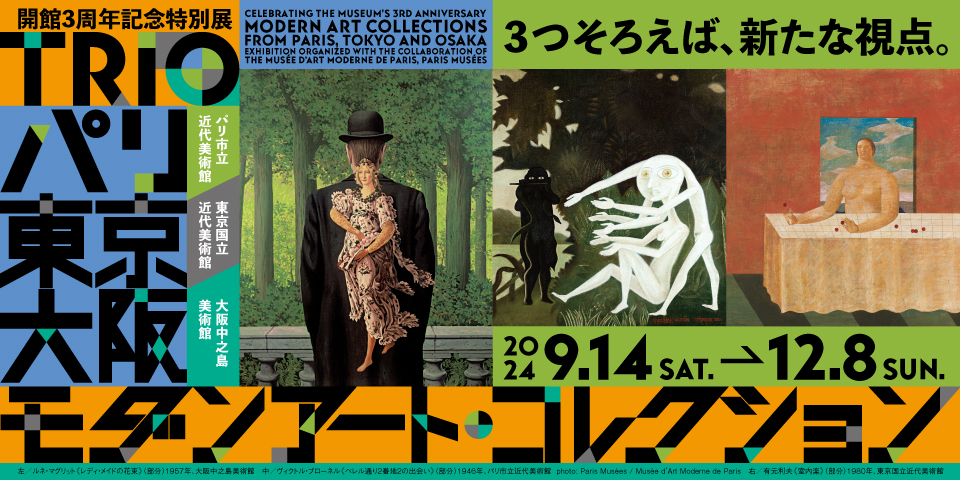
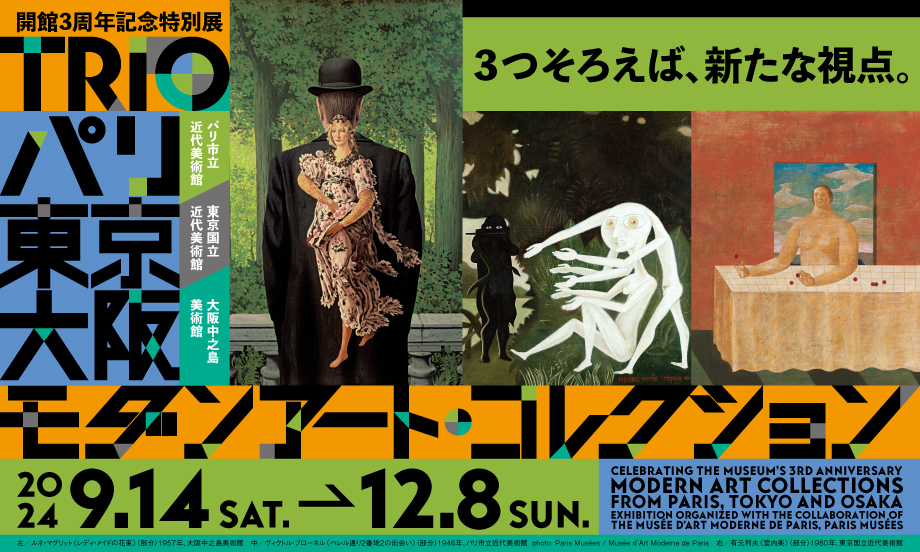
This event has ended.
Celebrating the Museum’s 3rd Anniversary
Trio: Modern Art Collections from Paris, Tokyo and Osaka
Exhibition organized with the collaboration of the Musée d’Art Moderne de Paris, Paris Musées
2024-09-14 – 2024-12-08
Exhibition website (Japanese only)
Outline
Paris, Tokyo, and Osaka: collections from three museums in these cities, each of which has nurtured its own unique culture, will come together. The Musée d’Art Moderne de la Ville de Paris on the banks of the Seine River, the National Museum of Modern Art, Tokyo near the Imperial Palace, and the Nakanoshima Museum of Art, Osaka on the central island of Osaka City, have all built rich collections of modern art as museums in major cities. This exhibition is an unprecedented and unique experiment in which works from the collections of the three museums that have something in common are selected to form a number of trios. The commonalities among the works included in each of the freely conceived trios are various, including subject matters, motifs, colors and shapes, materials, and the context in which the works were created, regardless of the era, school, or Eastern/Western backgrounds. The exhibition consists of 34 trios of more than 150 works, including paintings, sculptures, prints, drawings, photographs, designs, and videos by 110 artists, presented in seven chapters according to themes and concepts to propose a new way of viewing modern art from the early 20th century to the present day and to highlight its appeal.
Information about the Exhibition
| Dates | September 14 – December 8, 2024 Closed on Mondays, September 17, September 24, October 15, November 5 (except September 16, September 23, October 14, November 4) |
|---|---|
| Open hours | 10:00 – 17:00 (last entry 16:30) |
| Venue | Nakanoshima Museum of Art, Osaka 4F Galleries |
| Organizers | Nakanoshima Museum of Art, Osaka, The National Museum of Modern Art, Tokyo, Nikkei inc., Television Osaka, Inc. |
| With the collaboration of | Musée d’Art Moderne de Paris, Paris Musées |
| With the sponsorship of | Sompo Holdings, Inc., DAIKIN INDUSTRIES, LTD., SUMITOMO MITSUI BANKING CORPORATION, Mitsui Fudosan Co., Ltd., LIVE ART BOOKS |
| With the cooperation of | JAPAN AIRLINES |
| Admission fee | Adults 2100 yen (advance sales/groups 1900 yen) University / High school students 1500 yen (advance sales/groups 1300 yen) Junior high school/Elementary students: Free admission Member privileges (free admission, discounts) are available for this exhibition * Advance ticket sales: August 19 (10:00) – September 13 (23:59) * The museum may close without notice in the event of disasters or other circumstances beyond our control. * Prices include tax. Group prices are for groups of at least 20 visitors. * Persons holding an official Disability Certificate are admitted for half the price of a same-day ticket (including one attendant). Apply at the ticket counter (2F) on the day. (No advance reservation required.) * Certification of eligibility for special rates must be presented before admission for all except regular adult rates. * For this exhibition, regular adult rates apply to Osaka residents aged 65 or older. Ticket sale locations Nakanoshima Museum of Art, Osaka ticket site, online ticketing (e-tix), Ticket PIA(P code:687-008), Lawson Ticket (L code: 51556), CN Playguide, eplus, rakuten ticket, 7ticket(7 code: 106-720), asoview |
| Inquiries | Osaka City General Call Center 06-4301-7285 Hours: 8:00 – 21:00 (365 days) |
| Pre-leaflet |
Works
Between Reality and Unreality
There is a common thread between this trio of works, in that each artist has referenced a painting from the past, incorporating, into the work, what can be described as a clone of the artist, resulting in a space which lies between reality and unreality. Victor Brauner had moved to 2 bis Rue Perrel, where Henri Rousseau had once lived, and this inspired him to have his Conglomeros (a being with a giant head, two bodies, and six arms) appear in Rousseau’s work The Snake Charmer (1907, Musée d’Orsay, Paris). Meanwhile, René Magritte’s work often features a man in a top hat, and in this work he has superimposed, on top of this image, the flower goddess Flora from Botticelli’s Primavera (c. 1482, Uffizi Gallery, Florence). In the work by Arimoto Toshio, drawn to the early Renaissance frescoes painted by artists such as Piero della Francesca, a classical female figure which is portrayed in numerous works is seated in the center of the painting; although unrealistic it conveys a sense of nostalgia.-
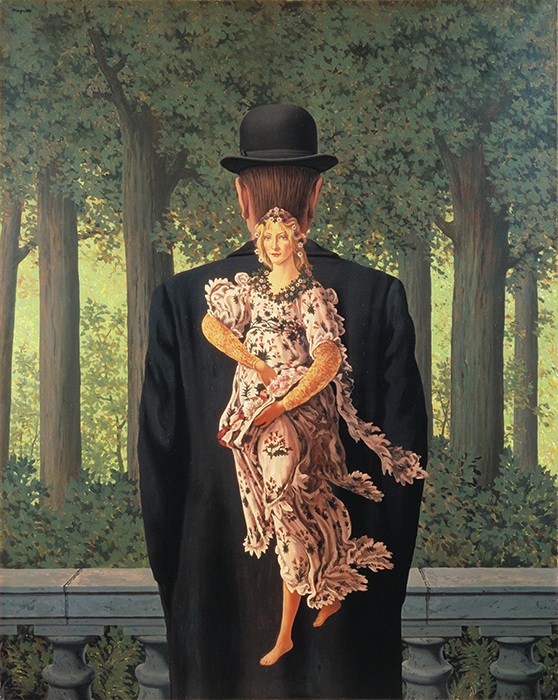
René Magritte
The Ready-made Bouquet
1957, Nakanoshima Museum of Art, Osaka -
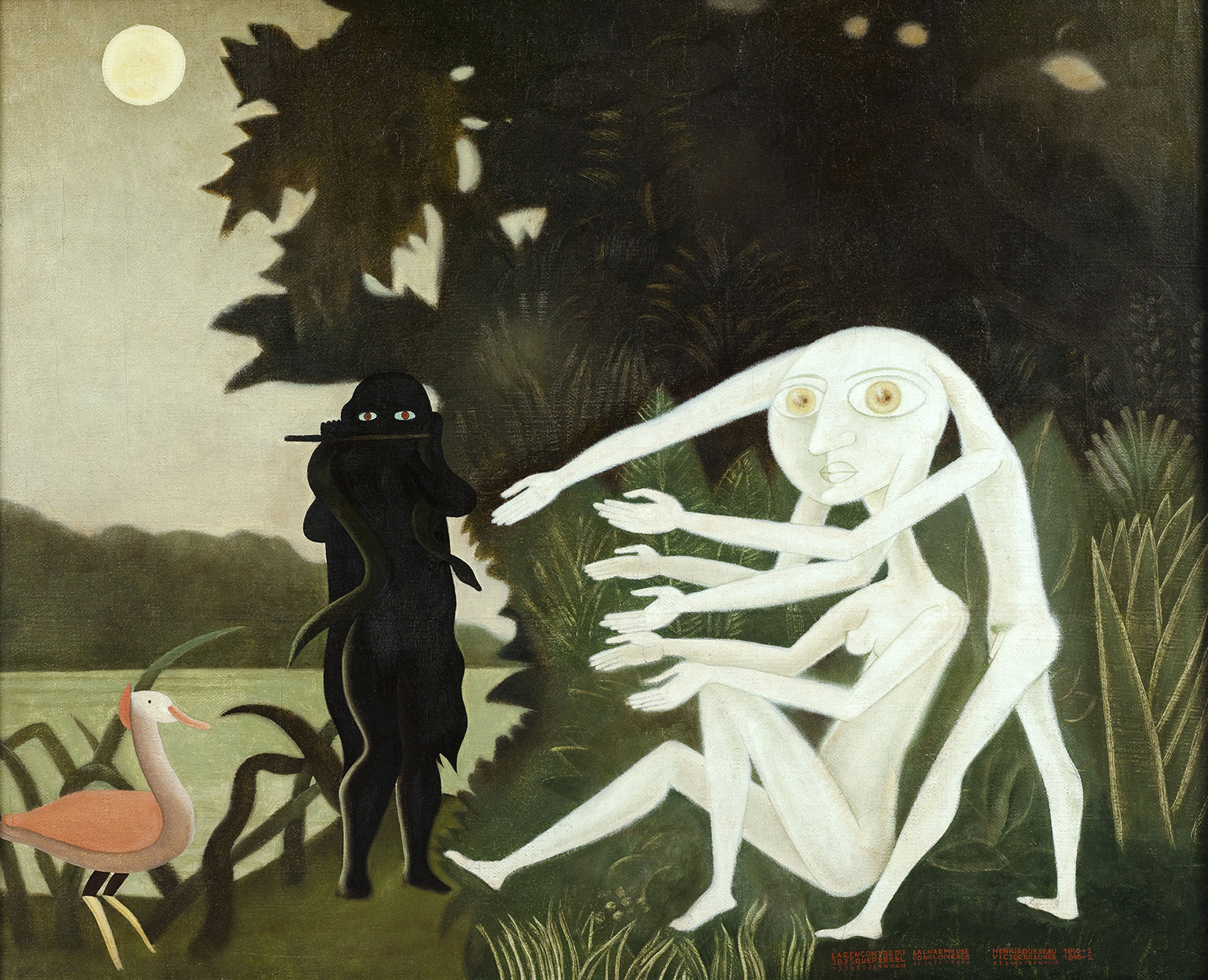
Victor Brauner
The Meeting at 2 bis Rue Perrel
1946, Musée d’Art Moderne de Paris
photo: Paris Musées/Musée d’Art Moderne de Paris -
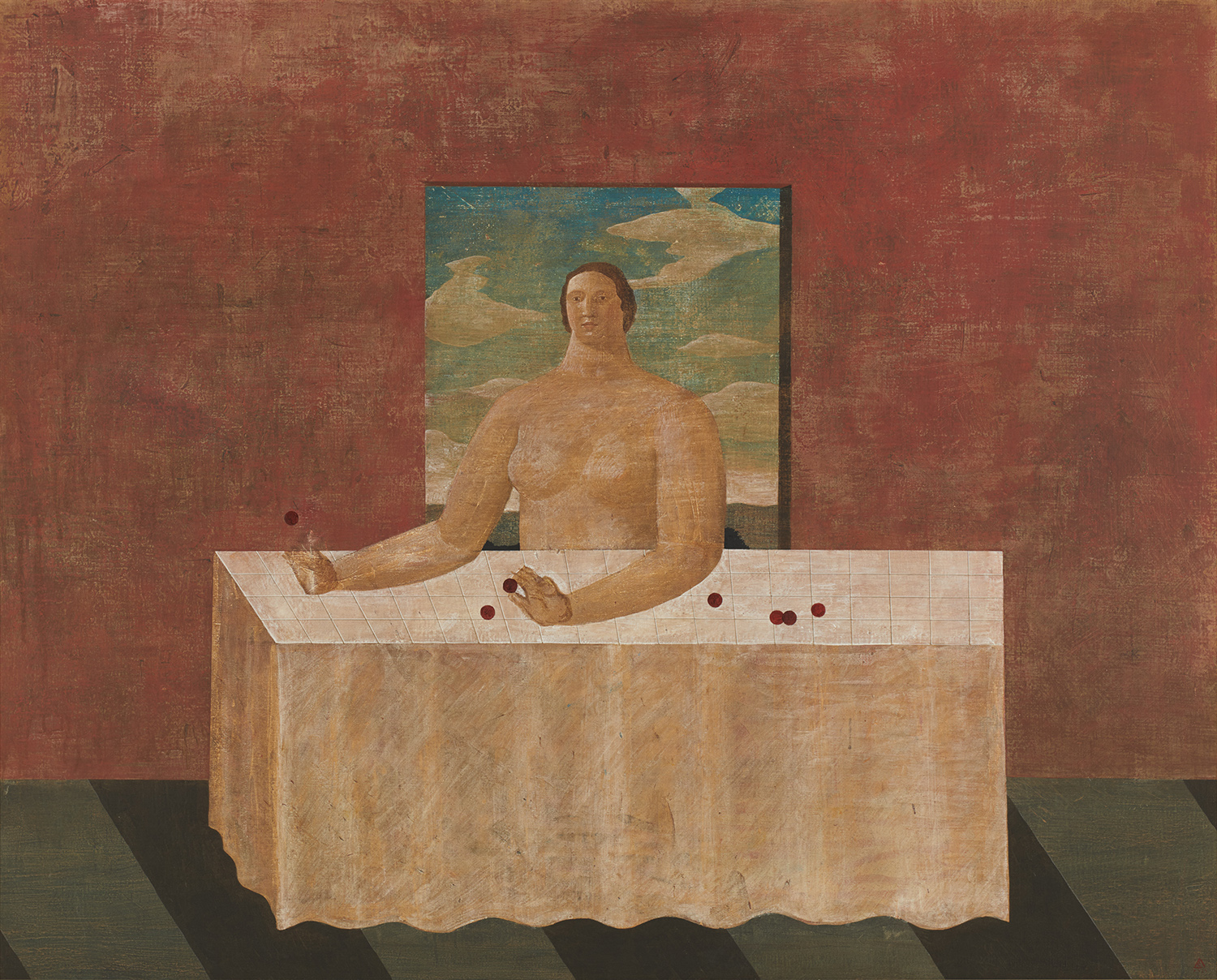
Arimoto Toshio
Chamber Music
1980, The National Museum of Modern Art, Tokyo
The Power of Models
Here, models are reclining and adopting bold poses as the mood takes them. The image of reclining women has been a constant in the history of Western painting. In such poses, women were manifestations of ideal beauty but they were also frequently depicted as vulnerable women who are the object of the male gaze. However, Amedeo Modigliani’s nude, in which the subject is staring provocatively at the viewer, Yorozu’s reclining nude beauty who stares at the viewer with scorn, and Henri Matisse’s odalisque, the subject of which seems to be completely unaware that she is being observed, all repel the viewer’s gaze and are imbued with a sense of empowerment, with each woman proud of her beauty.-
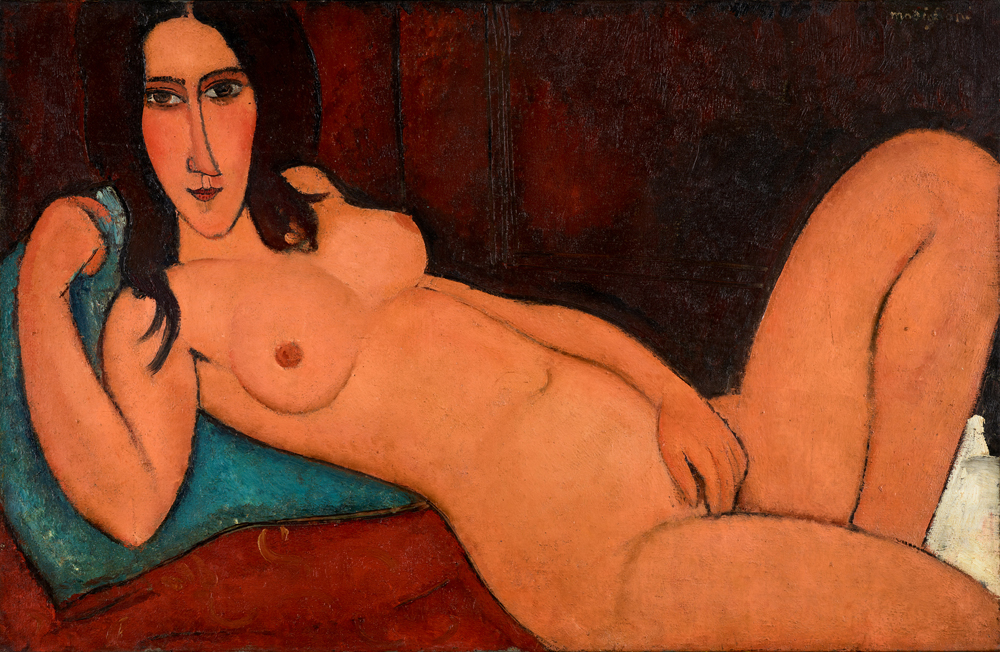
Amedeo Modigliani
Reclining Nude with Loose Hair
1917, Nakanoshima Museum of Art, Osaka -
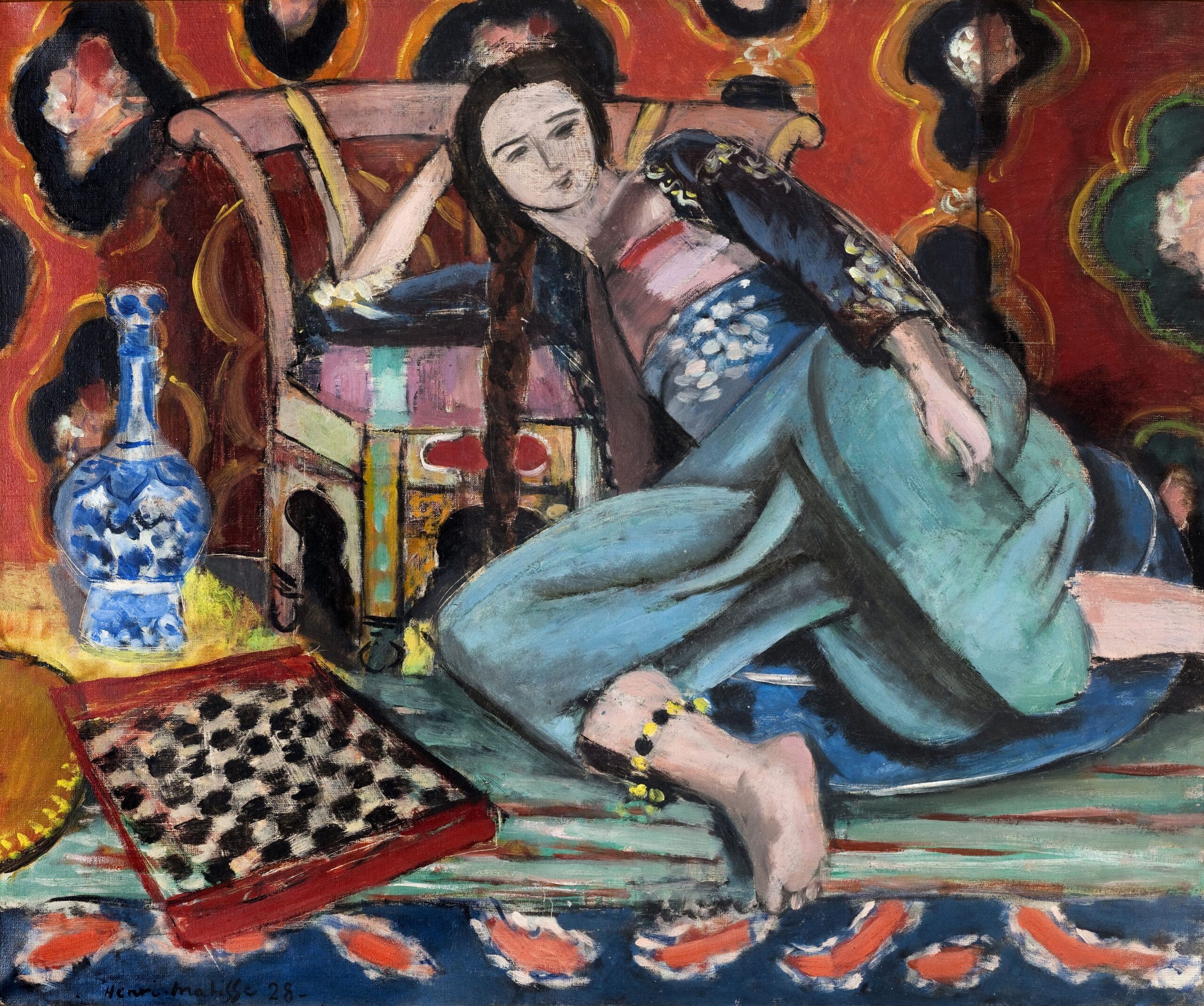
Henri Matisse
Odalisque with a Chair
1928, Musée d’Art Moderne de Paris
photo: Paris Musées/Musée d’Art Moderne de Paris -
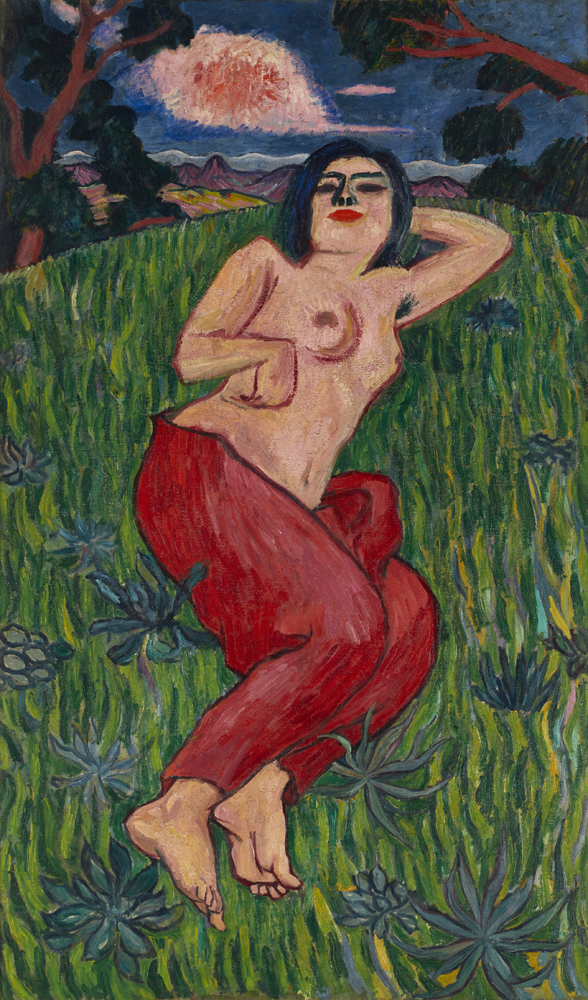
Yorozu Tetsugoro
Nude Beauty
1912, National Important Cultural Property, The National Museum of Modern Art, Tokyo
Display period: September 14 – November 22
The Imaginary Garden
Plants cover the entire canvas in each of these works, and in fact all three artists share a deep connection with plants. Raoul Dufy, who lived near a botanical garden, created countless textile designs featuring plant and animal motifs, Tsuji Hisashi, influenced by a father who loved plants, at one stage wanted to become a botanist, and André Bauchant, before becoming an artist, ran a horticultural business before teaching himself to paint. The artists positioned their depictions of favored flowers, fruit, and animals on the canvas in an almost rhythmical fashion as they allowed their imaginations to take full flight, creating a world that can be described as an imaginary garden that only exists in the work. These decorative paintings, filled with flowers and grasses, are imbued with something akin to mysticism, and we can almost smell the flowers and fruit.-

André Bauchant
The Fruit Stall
1950, Nakanoshima Museum of Art, Osaka -
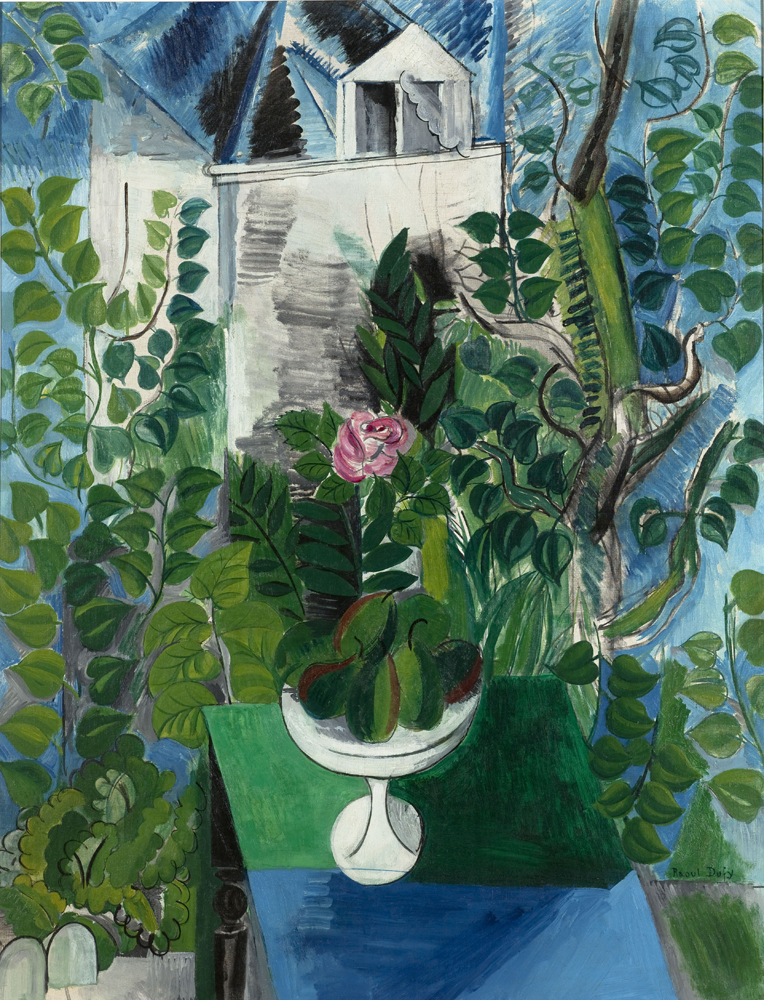
Raoul Dufy
House and Garden
1915, Musée d’Art Moderne de Paris
photo: Paris Musées / Musée d’Art Moderne de Paris -
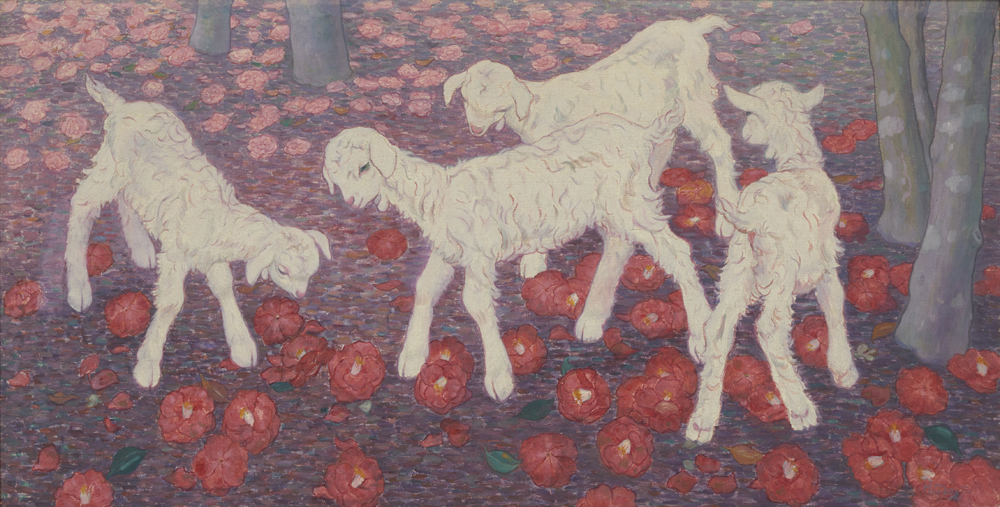
Tsuji Hisashi
Camellias and Kids
1916, The National Museum of Modern Art, Tokyo
Artists
Amano Ryuichi, Karel Appel, Arimoto Toshio, Arman (Armand Fernandez, dit), Jean Arp (Hans Arp), Jean-Michel Basquiat, André Bauchant, Maria Blanchard, Umberto Boccioni, Pierre Bonnard, Constantin Brancusi, Brassaï (Gyula Halász, dit), Victor Brauner, Alexander Calder, Henri Cartier-Bresson, Marc Chagall, Salvador Dali, Henry Darger, Giorgio De Chirico, Félix Del Marle, Robert Delaunay, Sonia Delaunay, Julien Discrit, Dodo Shunji, Robert Doisneau, Raymond Duchamp-Villon, François Dufrêne, Raoul Dufy, Jean Fautrier, Foujita Tsuguharu (Léonard Foujita), Fujishima Takeji, Pablo Gargallo, Hara Katsushiro, Hasekawa Toshiyuki, Hatakeyama Naoya, Hayakawa Yoshio, Idemitsu Mako, Ikeda Yoson, Ikemura Leiko, Ishiuchi Miyako, Kanno Seiko, Kawai Shinzo, Kawakami Ryoka, Kawasaki Kametaro, Kikuhata Mokuma, Kishida Ryusei, Kitadai Syozo, Kitano Tsunetomi, Kitawaki Noboru, Paul Klee, Yves Klein, Koga Harue, Koide Narashige, Koizumi Kishio, Kuramata Shiro, Kusama Yayoi, Marie Laurencin, Fernand Léger, El Lissitzky, Maeda Toshiro, René Magritte, Albert Marquet, Maruki Toshi (Akamatsu Toshiko), Henri Matisse, Matsumoto Shunsuke, Fausto Melotti, Jean Metzinger, Henri Michaux, Migishi Kotaro, Amedeo Modigliani, Momose Aya, Morimura Yasumasa, Jean-Luc Moulène, Murayama Tomoyoshi, Nakanishi Natsuyuki, Nara Yoshitomo, Narahara Ikko, Ogura Yuki, Okamoto Koen, Okamoto Taro, Onchi Koshiro, Pablo Picasso, Serge Poliakoff, Marc Riboud, Germaine Richier, Mark Rothko, Saeki Yuzo, Sahoyama Gyoukai, Sato Masaharu, Shiomi Mieko, Chaïm Soutine, Sugai Kumi, Sugiura Hisui, Takanashi Yutaka, Tanaka Atsuko, Toeko Tatsuno, Togo Seiji, Tomatsu Shomei, Tomii Motohiro, Tomiyama Haruo, Tsuda Yoho, Tsuji Hisashi, Maurice Utrillo, Suzanne Valadon, Xavier Veilhan, Sabine Weiss (Sabine Weber, dite), Yanagihara Yoshitatsu, Yasui Sotaro, Yorozu Tetsugoro, Yoshihara JiroAbout the Museums
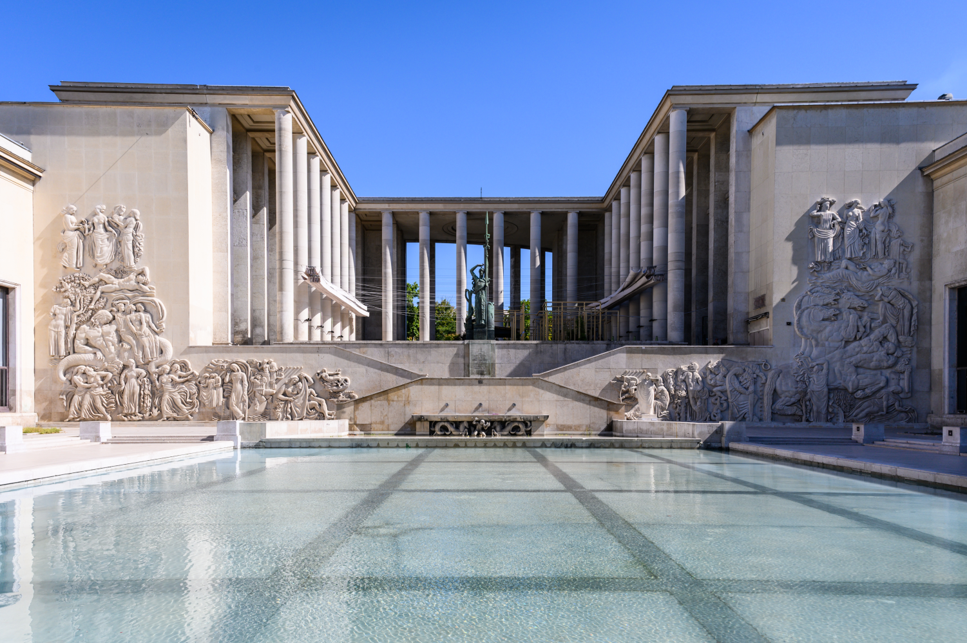 photo: Fabrice Gaboriau
photo: Fabrice Gaboriau
Musée d’Art Moderne de Paris
Located between the Champs-Elysées and the Eiffel Tower, the palace that houses the Musée d’Art Moderne de de Paris is a magnificent example of 1930s architecture. It is unquestionably one of the key institutions of Parisian cultural life. The Museum’s collection of more than 15,000 works makes it one of the biggest museums of modern and contemporary art in France.
https://www.mam.paris.fr/
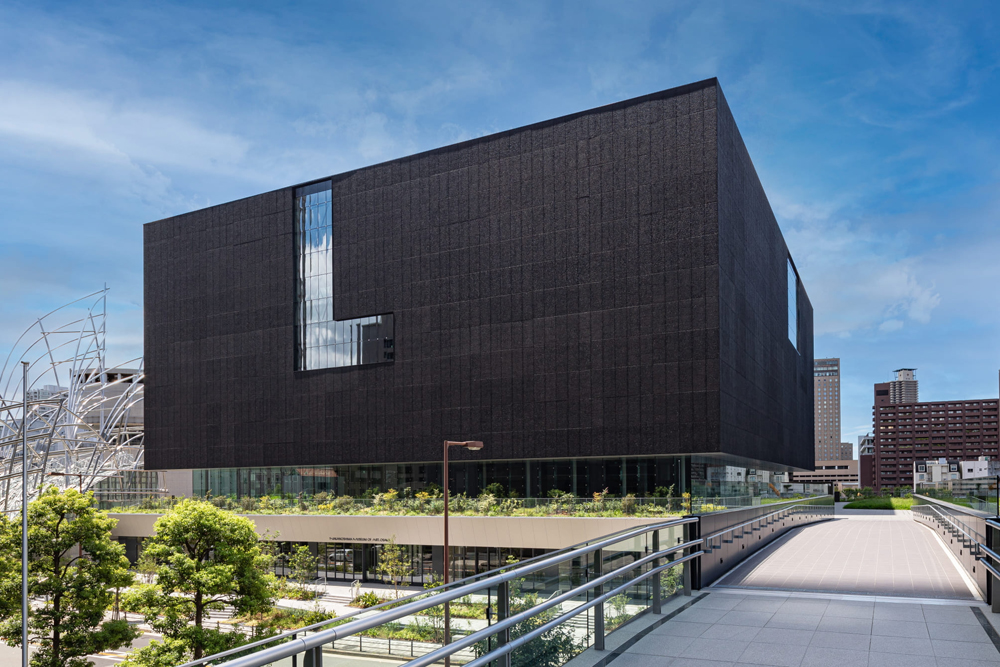
Nakanoshima Museum of Art, Osaka
Nakanoshima Museum of Art, Osaka opened on February 2, 2022 in the Nakanoshima district of central Osaka. It has a collection of over 6,000 works, focusing on superb works of art and design from Japan and around the world created between the mid-nineteenth century and the present, together with additional examples of the richness of art produced in Osaka.
https://nakka-art.jp/en/
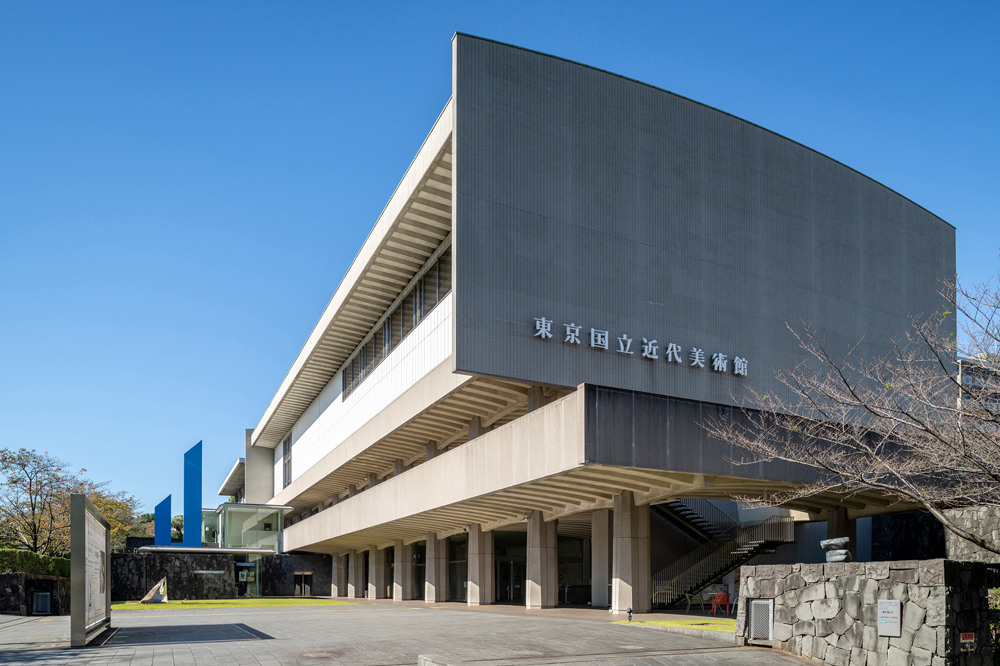
The National Museum of Modern Art, Tokyo
The National Museum of Modern Art, Tokyo is Japan’s first national art museum and is located across the Imperial Palace. The museum is home to one of Japan’s largest art collections, countless masterpieces dating from the end of the 19th century to the present day by both Japanese and foreign artists.
https://www.momat.go.jp/en/
